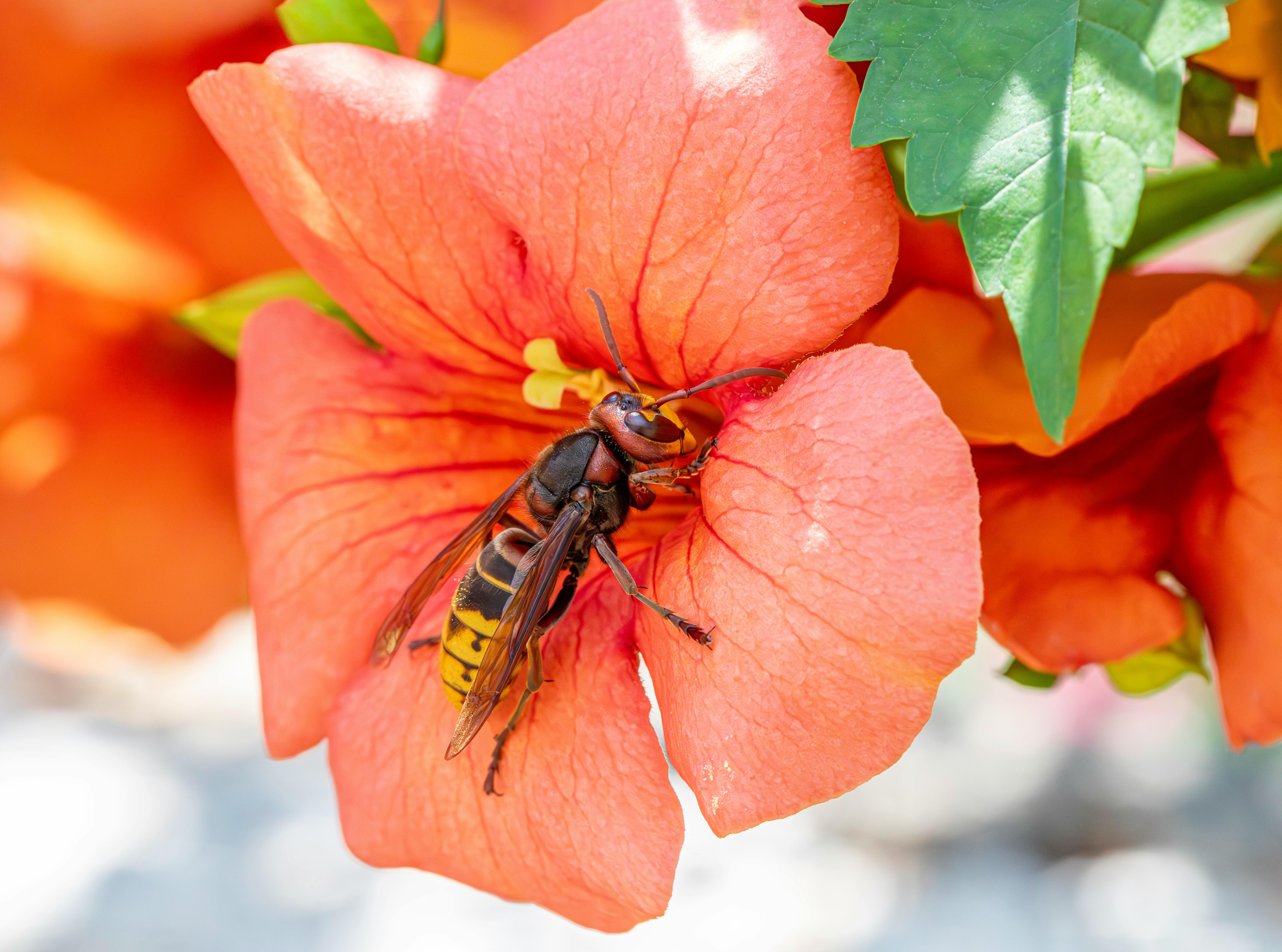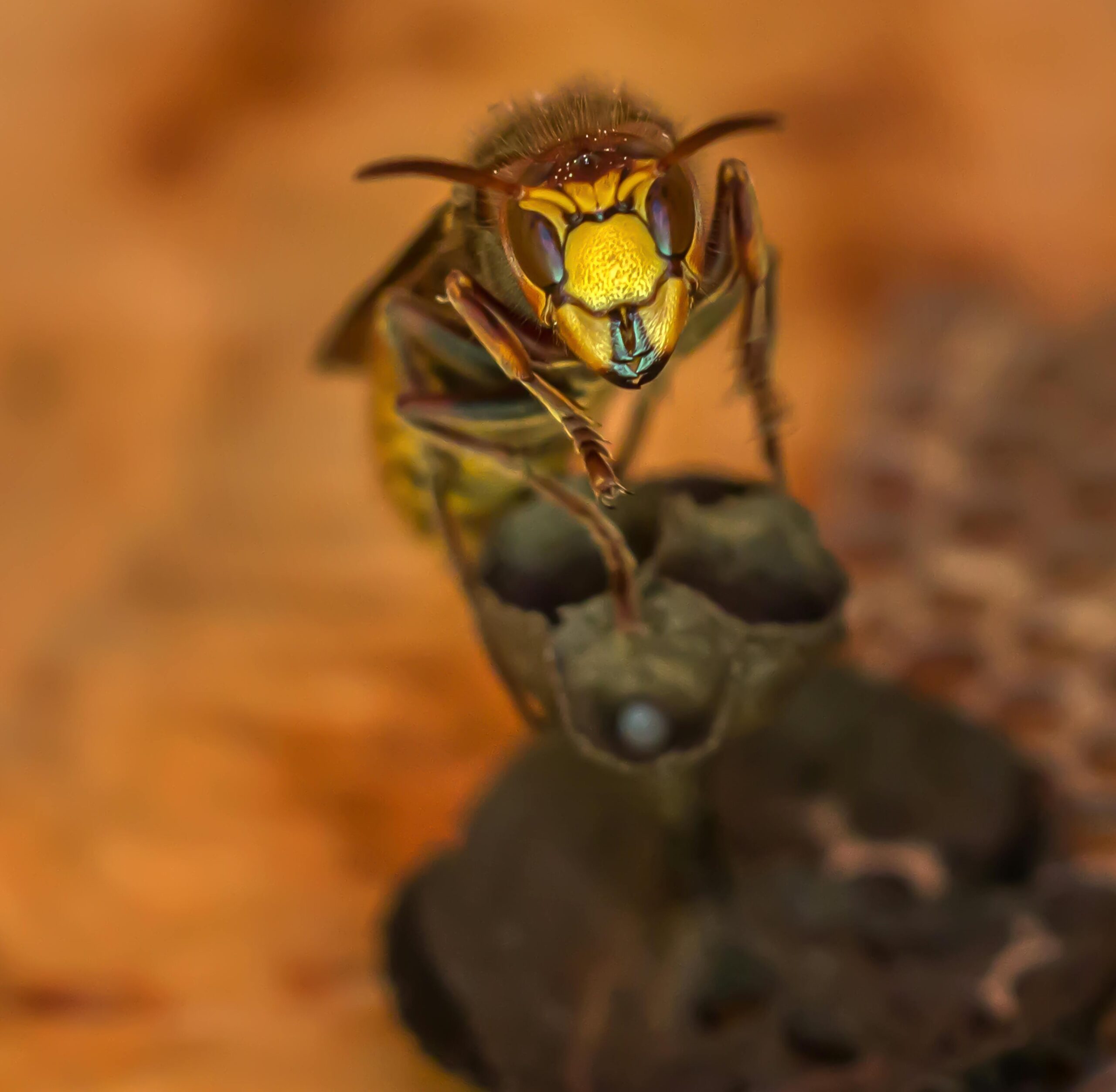Understanding the Hornissennest: A Fascinating Look at Hornet Nests
What is a Hornissennest?
A **Hornissennest**, or hornet nest, is an intricate structure built by hornets, which are a type of wasp. These nests are often found hanging from tree branches, under eaves, or in protected areas around homes and gardens. Typically made of a paper-like material, the nest is created using chewed wood fibers mixed with saliva, which is then formed into a unique, layered structure. This article will delve into the life cycle of hornets, the ecological significance of their nests, and important identification traits. Understanding these fascinating creations can help in managing their presence when necessary.
Life Cycle of Hornets
The life cycle of a hornet begins in the spring when a fertilized queen emerges from hibernation. She starts constructing a small nest and lays the first eggs, which hatch into sterile female worker hornets. These workers are responsible for expanding the nest, foraging for food, and caring for future generations. As summer approaches, the nest grows larger, often accommodating hundreds of hornets. By late summer to early fall, reproductive males and new queens are produced. After mating, these new queens seek refuge for winter, while the original colony dies off, leaving the nest abandoned. Understanding this cycle can be crucial for homeowners facing infestations.

Ecological Importance of Hornissennests
Despite their fearsome reputation, **hornissennests** play a vital role in our ecosystems. Hornets are natural predators of numerous pest insects, helping to control populations that can damage crops and gardens. Their **nests** also serve as a habitat for various species of wildlife, providing a unique breeding ground for certain insects. Furthermore, hornets contribute to the pollination of some flowering plants. By recognizing the ecological role hornets play, we can better appreciate them and make informed decisions on how to manage any problematic nests that may appear in our spaces.
Identifying Hornissennests
Identifying hornissennests is important for effective management. These nests typically appear as a gray-brown, papery structure that can be quite large. It’s crucial to differentiate between hornet nests and other wasp or bee nests because their behavior and potential risks vary significantly. Hornet nests are often globe-shaped and may hang downwards. Knowing what these nests look like can empower homeowners to take appropriate action, whether observing them from a distance or safely removing them if they pose a threat.
Size and Shape Variations
Hornissennests can vary widely in size and shape depending on the species of hornet and environmental factors. Typically, they can span anywhere from the size of a basketball to much larger. The **outer layer** is composed of tightly packed, greyish paper and provides insulation to the colony, protecting it from temperature fluctuations. In certain instances, the nests can be very heavily fortified, making them challenging to approach. Understanding the size and structure of these nests facilitates better understanding and management practices.
Safety Precautions for Handling Hornissennests
If a hornissennest is located near your home, it’s essential to consider safety precautions before attempting any removal. Hornets can be aggressive, especially when their nest is disturbed. Wearing protective clothing and gear is critical, as well as addressing the nest during dusk or dawn when hornets are less active. It’s often advisable to consult with pest control professionals who have the knowledge and experience to handle hornet nest removal safely and humanely. Taking these precautions helps minimize risk to both humans and hornets.
Managing Hornissennests
When it comes to managing hornissennests, there are several strategies that homeowners can employ. Depending on the situation, one can choose to leave the nest alone, relocate it, or eliminate it. Each option has its merits and downsides. Below, we’ll explore practical approaches to handling hornet nests effectively, ensuring safety and ecological balance.
Leave it Alone: When To Observe
In some cases, it may be beneficial to leave a hornissennest alone. Hornets can provide significant pest control by feeding on other insects in the area. If the nest is not causing harm, observing it from a distance can be a great way to enjoy the natural world. This approach is particularly beneficial in the fall when the hornets are preparing to die off naturally. Understanding when to allow nature to take its course is part of successful wildlife management.
Relocating Hornissennests
If you prefer to relocate a hornissennest, it’s crucial to do so when temperatures are lower, either early morning or late evening, as the hornets will be less active. Using a sturdy container, you can move the nest to a more suitable location, ideally away from human activity. Be sure to wear protective gear during this process and take care to maintain the nest’s integrity. Always keep in mind that relocating the nest may not be a permanent solution, and hornets may return to the original location.
Professional Removal: A Safe Approach
Engaging pest control professionals for hornissennest removal is often the safest and most effective option, particularly for larger nests or those located in high-traffic areas. Professionals have tools and methods to handle the situation safely and can often eliminate potential health risks associated with aggressive hornets. By opting for professional help, you can ensure a thorough and humanely executed removal, allowing you to protect your home while respecting wildlife.
Key Takeaways
- Hornissennests are intricate structures built by hornets, which play a crucial ecological role.
- Understanding the life cycle of hornets aids in effective management practices.
- Identifying hornissennests by their size and shape helps differentiate them from other pests.
- Safety precautions are vital when dealing with hornets to prevent aggressive encounters.
- Managing hornissennests can involve observing, relocating, or professional removal.
FAQ
1. How can I prevent hornets from building nests near my home?
Preventing hornets from building nests involves keeping outdoor areas clean and free from food scraps, as well as sealing potential nesting sites, such as holes in walls and eaves. Regularly inspecting outdoor spaces during spring can help spot any early nest construction before it becomes a larger issue. Employing natural repellents, like essential oils, may also deter hornets from nesting nearby.
2. Are hornets beneficial to the environment?
Yes, hornets are beneficial as they control pest populations by preying on insects such as flies and caterpillars. They also contribute to pollination, similar to bees. Recognizing their ecological value can help foster a more balanced relationship with these often misunderstood creatures.
3. What should I do if I get stung by a hornet?
If you get stung by a hornet, it is essential to remain calm and remove the stinger if it is still embedded in the skin. Clean the affected area with soap and water, and apply a cold compress to reduce swelling. Over-the-counter antihistamines or pain relievers can alleviate discomfort. If you experience severe allergic reactions, seek medical assistance immediately.
4. How do I identify the difference between hornets and bees?
Hornets are typically larger than bees and have a smoother, less hairy body. Unlike bees, which carry pollen on their legs, hornets have specialized mandibles for chewing and consuming prey. Understanding these differences can help you apply appropriate management strategies based on the species you encounter.
5. Can hornets become aggressive if their nest is disturbed?
Yes, hornets can become aggressive if their nest is disturbed. They are protective of their nests, especially during the peak summer months. It’s vital to approach any nests with caution and ideally to consult professionals for removal or management to avoid stings.
6. Is it safe to spray insecticides on hornissennests?
Using insecticides on hornissennests can be effective; however, it is essential to follow all safety precautions. Always wear protective gear and apply treatments during the evening when hornets are least active. Consider consulting professionals for safer and more effective treatment options.
7. Where can I find more information about hornets and their nests?
For more information about hornets, their behavior, and how to manage nests, consider visiting local extension services, entomology departments at universities, or reputable wildlife conservation organizations. They provide valuable resources and guidance tailored to specific regions and hornet species.
